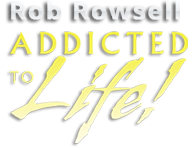Rob Rowsell explains to the group the process of property retrading. Namely, he mentions the example of a multi-family real estate investment he is doing due diligence on now. Unfortunately, the rental property value is looking to be a lot less than what the seller expected. Namely, the HVAC and electrical will need costly replacements, numbering in the six figures. Sometimes you have to retrade, or negotiate, with the seller. Do not get emotionally attached to a property, especially before the sale goes through!
 Property Retrading Explained
Property Retrading Explained
Rob began by updating the Community on a 168-unit property that he was looking into. The prospects of this multi-family complex were looking bleak. Specifically, Rob’s team found through their walkthrough that it was was worth about a half million dollars less than the seller’s asking price in its current state. Yikes! Imagine having to break that news to someone.
In that instance, Rob had to go through the process of property retrading. That means asking the seller for a price reduction, because of issues you have found with the property. If you retrade often, it could hurt your reputation as a real estate investor. Make sure you identify property issues as soon as you can in the process.
The Insurance Cost Downside
Not only that, if you find a lot of issues with multi-family home complex during discovery, the insurance costs could skyrocket once you take over. The property in question needed a $175,000 upgrade in electrical boxes alone, or Rob’s company couldn’t even take out a new policy on it. The seller won’t lose his existing insurance policy due to the outdated equipment, but there’s no way he can sell the property in the state it is in. We can all learn from this situation not to slack off on keeping our properties up to code. When we go to sell in the future, we could be in the same position as this seller.
In addition to the electrical issues, half of the HVAC units were well past their expected lifespans. Rob predicts none of them will survive the heat of this year’s summer in Texas. Most of the cap ex budget Rob’s team planned for consisted of interior renovations. None of them foresaw $500,000 in necessary upgrades.
Rob’s team did not expect the seller to accept a property retrade proposal of subtracting the full 500k, but they were hopeful he would meet them halfway. Thus far, he is not playing ball at all. Sometimes, you put a ton of sweat equity into property discovery and writing up a deal, just for it to fall through in the end. It’s easy for Rob to say, but don’t get emotionally attached! It’s just business after all, so put it in God’s hands and move on to the next deal.
Join Our Community
Do you own multi-family properties? If not, do you aspire to one day? Then you should consider joining our online discussion group, the Addicted To Life Community! Each month, Rob Rowsell will teach you what you must do in order to build wealth in the real estate business. It’s not as easy as it looks! Property taxes, liens, and legal fees can all be hard to navigate, so having a successful guide in your corner like Rob is a must! Enroll today!

 How To Perform an Effective Real Estate Property Walkthrough
How To Perform an Effective Real Estate Property Walkthrough Wealth Development With Real Estate – Growth Advantages
Wealth Development With Real Estate – Growth Advantages Rob Explains His Cash On Cash Return Real Estate Formula
Rob Explains His Cash On Cash Return Real Estate Formula Financial Freedom Amount – Finding it through your Profit and Loss Review
Financial Freedom Amount – Finding it through your Profit and Loss Review Investment Performance Review – Time and Funds
Investment Performance Review – Time and Funds Advantages of an In-House Bookkeeper
Advantages of an In-House Bookkeeper Backend Equity Property Investment
Backend Equity Property Investment Using Strategic Depth to Grow Your Assets
Using Strategic Depth to Grow Your Assets Mistakenly Applying For A Small Business Loan
Mistakenly Applying For A Small Business Loan